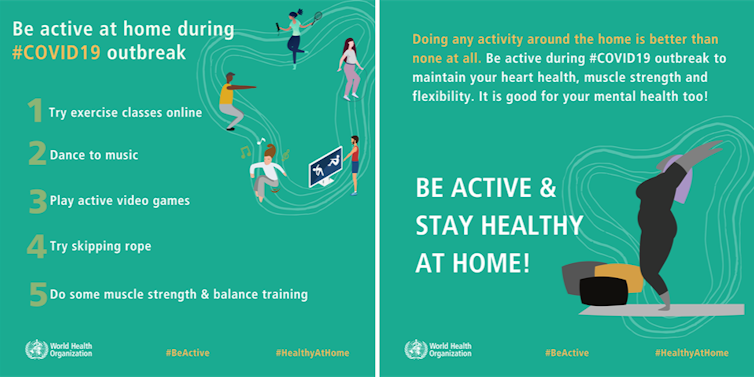Chloe Sher, a PhD student in the Faculty of Kinesiology and Physical Education, and Caroline Fusco, an associate professor at the Faculty, co-wrote a piece for The Conversation in which they discuss the effects COVID-19 has had on women and exercise.
Exercising has been crucial to maintaining mental and physical health throughout the COVID-19 pandemic. However, not everyone can be equally active. Women are generally less active than men and this disparity between genders in exercise participation exacerbates the gender inequality in health.
Since March 2020, when countries and cities across the globe started their lockdowns, the World Health Organization (WHO) launched the #HealthyAtHome campaign to encourage populations to stay active while social-distancing or self-isolating at home.
The campaign recommends a minimum of 150 minutes of moderate-intensity physical activity per week for adults and a minimum of 60 minutes a day of moderate to vigorous-intensity physical activity for children and adolescents (age 5-17).
 The World Health Organization developed social media shareables to encourage people to stay active and healthy at home during the pandemic. (World Health Organization)
The World Health Organization developed social media shareables to encourage people to stay active and healthy at home during the pandemic. (World Health Organization)Since the COVID-19 pandemic began, we have observed that peoples’ physical exercise routines can be disrupted. Places where people are regularly active such as fitness centres and parks may have been temporarily closed. While on the other hand, working from home and online schooling have allowed for more flexibility in choosing when to exercise.
Whether people have been able to remain physically active these past 12 months, may depend on their backgrounds and circumstances — some may have had to continue working during the pandemic (for example, frontline and essential workers) and are exhausted by the demands of their jobs.
Our recent research shows that while people have become more active overall since the onset of the pandemic, the gaps in exercise have been widening between gender, income, race and education.
